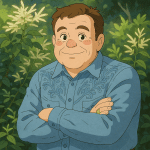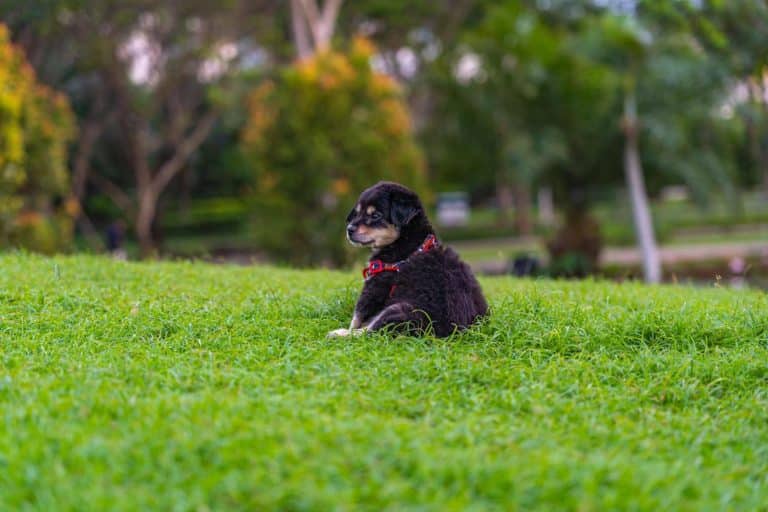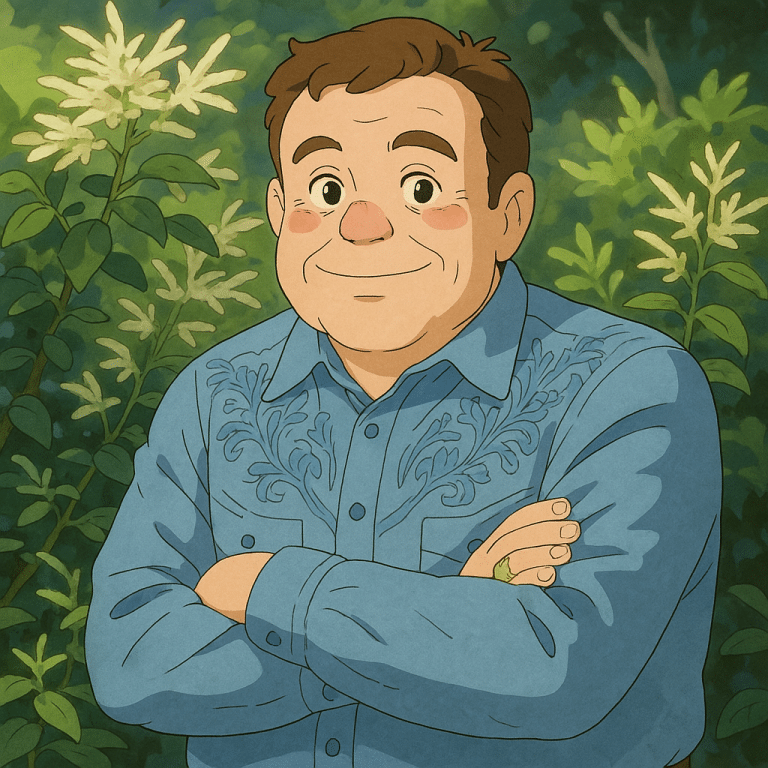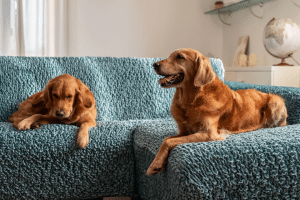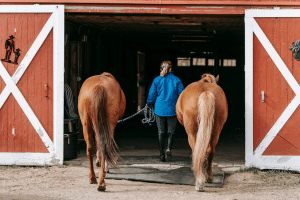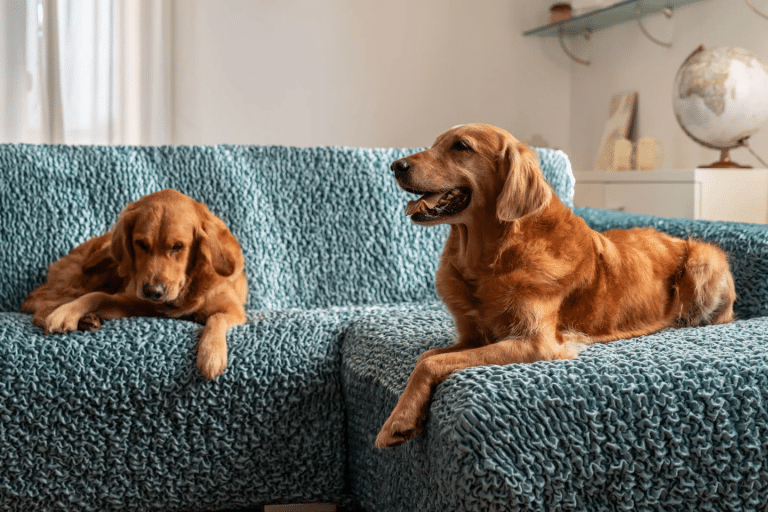If you have the right design and proper care knowledge, then keeping a lush green lawn and a playful pup is possible. There are numerous pet owners who often stress out thinking about keeping their lawns green and healthy. It ensures that your dogs have a safe space outdoors to run freely.
Maintaining a harmonized setting with durability and comfort is achievable through meaningful choices in landscaping, pet care, and proper maintenance. If you own small, energetic breeds like a Teacup Chihuahua, a well-ornamented lawn is the perfect retreat for your pup’s comfort, beauty, and freedom to explore!
Smart Tips To Create A Dog-Friendly Lawn
Designing the best dog-friendly lawn that remains captivating all year round needs extensive strategy and consistency. We will now share the best tips to help you add beauty and functionality that helps you create an outdoor retreat for your dog without disrupting the curb appeal of your property.
Choose Durable and Safe Grass Types
Planting grass variants such as Zoysia, Bermuda, and Perennial Ryegrass offers better strength to the paw traffic and offers your pup a quick recovery from play. Such types of grass variants can withstand frequent usage, retaining their dynamic color even when under stress. Therefore, they are the perfect ones for homes with small dog breeds that don’t shed, as they would love spending time outdoors. Also, ensure to avoid those delicate variants that quickly damage and turn brown when under consistent movement.
It is further essential to create a strong root system. Infrequent or deep water can promote strong growth, while setting the mower at a higher blade level induces stress, keeping your grass lush green. The outcome you get is a soft, dense lawn that feels comfortable under your dogs’ paws and remains visually captivating.
Designate Play and Potty Zones
Dedicating separate areas for playtime or potty breaks can keep your whole dog-friendly lawn away from any kind of damage or harm. Ensure to use materials like mulch, pea gravel, or artificial turf for your pup’s designated potty areas to prevent any urine burns and make cleanups effortless. Training your dog to use the zones to help preserve the rest of the grass.
You can use agility equipment, fetch-friendly areas, or tunnels in the play zones. Ensure to define these areas clearly to keep your pup entertained, reducing any sort of risk to the lawn. This type of separation can turn maintenance effortless, adding to the overall structure of the outdoor or backyard design.
Incorporate Pet-Safe Landscaping Elements
The use of pet-friendly plants and hardscaping will beautify your lawn more and make it safer. Such non-toxic plants as marigold, lavender, and rosemary will be beautiful, fragrant, and will not harm your dog. The plants to be avoided are poisonous, such as azalea, foxglove, and tulips, which may lead to complications when consumed.
Pathways should be used to avoid muddy paws by using natural products such as flagstone or bark mulch. Plant solid boundaries to shield sensitive flower beds and provide a contrast of appearance. The greenery used with pets and functionality allows your lawn to become safe and enjoyable for your pet.
Use Pet-Safe Lawn Care Products
Fertilizers, weedkillers, and pest treatments may pose health hazards to pets because of harsh chemicals. The use of organic or non-toxic weed-killing products is also important for protecting dogs from lawn chemicals while ensuring that the grass remains green. Fertilizers made of compost or seaweed are safe and sustainable for growing grass.
Treat in the early morning or the late evening and remove pets from the lawn until it is fully dry. Periodic maintenance and the use of natural solutions can eliminate pest accumulation and promote healthy soil, maintaining a sustainable lawn that does not produce harmful residues.
Install Dog Paths and Barriers
Dogs have a habit of making trails on their popular paths. To ensure that there are no bald spots along these tracks, stone or gravel tracks are installed to give the track a polished appearance. Such routes enable free movement of dogs without destroying grasslands or making holes in the same area.
Boundaries such as low fences, hedges, or decorative borders can direct flow and secure delicate locations. These kinds of designs are orderly yet allow freedom of exploration by the dogs. The creation of structure and maintenance of a uniform lawn are achieved through the use of functional pathways and low barriers.
Provide Adequate Shade and Cooling Areas
Dogs do not prefer the hot sun, and they will dig holes or seek some cool ground. The overheating will be prevented by using darkened areas under the trees, pergolas, or umbrellas. The shaded zones ensure the grass is not exposed too much and is not overexposed, preventing it from drying up.
Water features or cooling mats can be added to it to make it more comfortable on a hot day. Relaxation will be encouraged by setting up comfortable resting places through soft turf or beds outside. The shade and the vegetation, coupled with airflow, make the lawn and your pet dog happy throughout the seasons.
Maintain Regular Lawn and Pet Care Routines
The green lawn is dependent on consistency. The grass is strengthened through frequent mowing, extensive watering, and aeration of the soil, which prevents thinning. The pet wastes would be removed before discoloration and accumulation of odor. According to the American Veterinary Medical Association (AVMA), nearly 45 percent of homes in the United States keep at least some type of pet, such as a dog, and this shows that it is imperative to have a safe and clean outdoor environment for pets and owners, too.
This is supplemented by taking care of your dog regularly. Washing the paws will reduce the amount of dirt in the house, and trimming the nails will prevent tearing the grass. Maintaining the pets and lawn gives a balance between animals and lawn appearances, making the environment a clean and pleasant place.
Add Enrichment Features for Play and Comfort
When the dog is cheerful, the chances of the dog digging and chewing plants will be minimized. Introducing interactions, such as excavating pits with sand or using toy boxes, will keep your dog busy. These other spots are thought-provoking to the head, but turn the power up on your clean lawn.
The sensory gardens, with dog-safe herbs, sprinklers, and mini obstacle courses, can be explored and exercised. Your dog is contented, and you have good lawns. A typical dog takes an interest in what is happening on the lawn, so having a well-established lawn within the limit helps protect your landscape.
Ensure Proper Drainage and Ground Stability
Difficult drainage may result in muddy spots and rotting grass, particularly in places where pets often play. Flattening the slopes and making soil amendments enhances water drainage and eliminates pooling. According to the Environmental Protection Agency (EPA), poor yard drainage causes up to 80% of lawn disease problems, highlighting the importance of water management in preserving good outdoor conditions.
It is important to consider installing French drains or permeable paving in areas with high traffic to direct water appropriately. These improvements will not make your lawn mushy, so it is safe for both playing and relaxing. The drainage should be done well to sustain the structure, maintain the health of the plants, and increase the lifespan of your lawn.
Balance Aesthetics with Functionality
A dog-friendly lawn should not look crass, but it should retain its functionality. Comfort and attractiveness can be increased with bright landscaping that includes features that are pet-friendly, including garden benches, stepping stones, or raised flowerbeds. Decorative but firm touches keep your outdoor environment down to earth and mellow.
The walkways and recreational area are illuminated by planned lighting, ensuring safety during night outings. The space would be aesthetically dynamic with the combination of the textures, forms, and natural materials. A lawn that is landscaped and not only appears beautiful but is also durable indicates that you are concerned about your house and also about your pet.
Conclusion
The careful planning, materials, and maintenance allow reaching the goal of a dog-friendly lawn and a beautiful design. The choice of grass, which is difficult to walk on, the playing ground, and the focus on pet-friendly ways will not only keep your dog fit, but it will also keep the place appealing. Any thoughtful choice improves the relationship between the pup and their owner, resulting in an outdoor vacation filled with joy, comfort, and lasting memories of nature.

